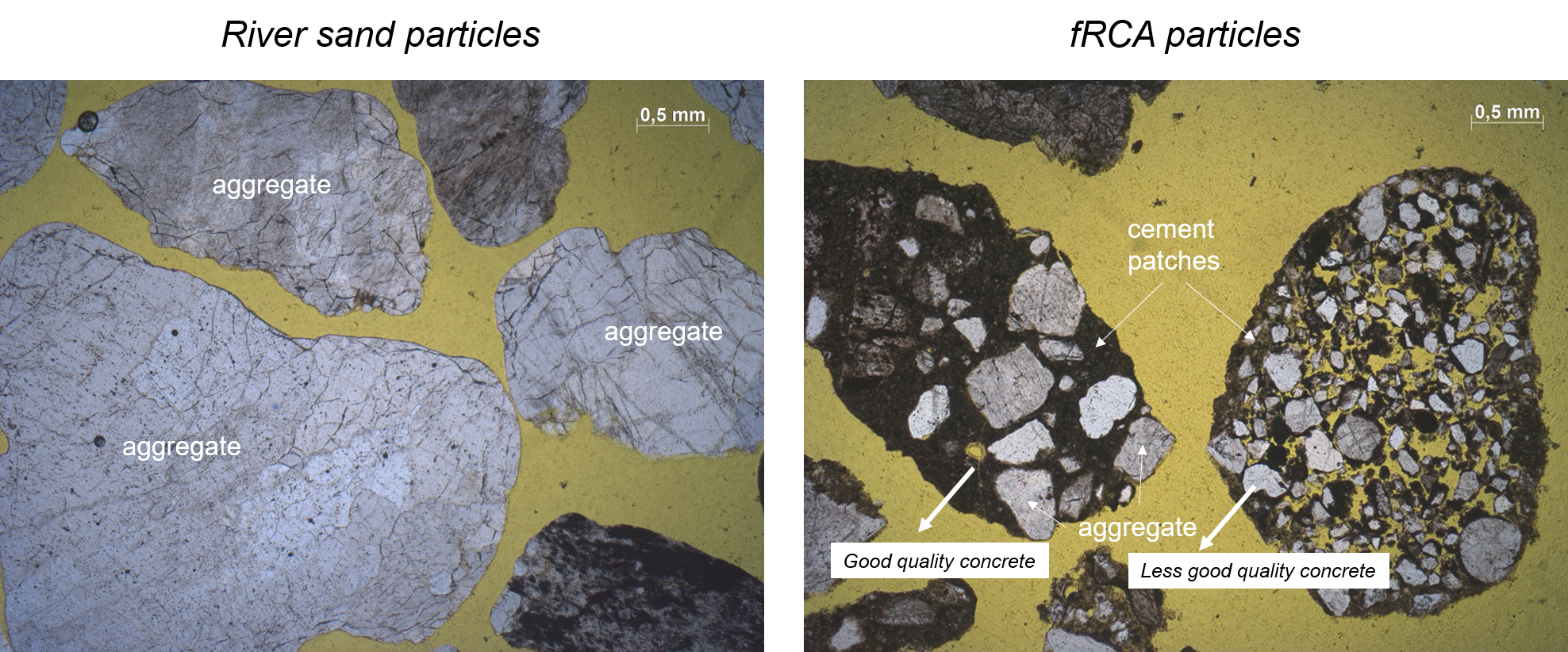In the Netherlands, 33 Mton of new concrete is produced annually, which accounts for almost 2 percent of the annual CO2 emissions in the Netherlands. Approximately 12 Mton of old concrete is released, which consists of approximately 7 Mton of coarse granulate (> 4 mm) and 5 Mton of fine fractions between O and 4 mm. Certain fine fractions could lend themselves excellently for new (high-quality) concrete applications.
The possibilities were investigated by Marija Nedeljković (TUD) in a multi-partner project with TNO, M2i, TU Delft, RWS, Twee R Recycling, Caron Recycling, AVG Recycling and BRBS Recycling. Different grain fractions of finely recycled concrete that were separated and processed in various ways have been examined. With advanced techniques and methods, physicochemical characteristics have been determined and hypotheses on grain packing and cement interaction have been related to the performance of optimized concrete mixes. Guidelines for quality control, separation and application of fine recycled concrete aggregates have been developed, leading to successful application of the recycled fine fraction in new concrete.
The involved recyclers and concrete producers have confirmed that they will now apply the fine recycled concrete aggregates in high-end and durable concrete products, an important step towards achieving a circular economy.
